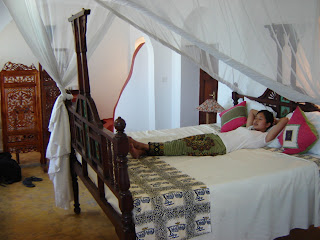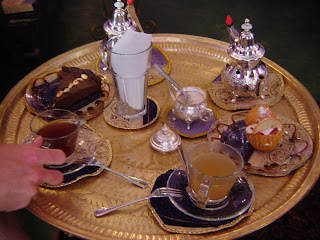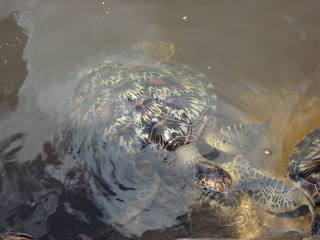August 19th, 2013
It has been an action-packed, fun-filled summer, and with
all of the activities that Kim and I have experienced in Africa, I thought that
it might be worthwhile to give some concluding remarks on our African
adventure.
Living in Malawi and witnessing the everyday lives of
villagers in one of the poorest countries on earth has certainly given me a
greater perspective on what it truly means to live in poverty. Having worked in a low-income community
in Baltimore, where people often treat others (especially teachers and others
in authority) with disrespect and mistrust, it was refreshing to find that in
Malawi the children are warm and friendly. The sheer amount of unbridled love that the children showed
for teachers and volunteers immediately lifted a burden off my shoulders. I felt appreciated, respected and
welcome in their community in a way that I never have been in Baltimore. The children craved love and attention,
but they also had a lot of love and attention to give. This loving environment, standing in
such stark contrast to the depths of their poverty is still something that I
haven’t completely processed or come to terms with. I can, however, say this: the people of Malawi are their
country’s greatest asset. In a
country with marginal farm land, no precious metals or valuable commodities,
the people will stand out, in many ways, as examples of how we should be.
The poverty that pervades the lives of the villagers in
Lifuwu is such a profound burden.
Whereas the poor of Baltimore can, to some degree, rely on welfare and
foodstamps, among other safety nets, for those in Malawi, if you don’t earn
enough money through work, you simply don’t eat. Many decry the sad state of the playground at schools in
Baltimore, but children in Lifuwu gather used condoms from the streets to tie
together in order to make footballs.
My point is certainly not that people in Baltimore are living a life of
luxury, or that more should not be done to ease their difficult lives; however,
I think that we should all be grateful for the things that we do have, because
there are people in this world with so much less than us. To see how friendly and happy the
people of Lifuwu were despite their condition, it makes me wish that we could
all be that positive.
Another case in point regards religion. Although Malawi is fairly evenly split
between Muslim and Christian, there is no palpable animosity. Muslim children play with Christian
children, Christian adults befriend and do business with Muslims without a
second thought.
Kim and I had the chance to get to know Islam on a much more
personal level during our stay in Malawi.
Not only did we see the local Muslims go about their daily lives, we
also were fortunate enough to become quite good friends with a Muslim volunteer,
Zohair, who freely answered any questions that we might have had about his
faith. Because we were in Malawi
during the holy month of Ramadan, we witnessed firsthand the commitment and
self-sacrifice that Islam demands of its followers. The ritual of the fast, that is, not eating or drinking
while the sun is up, was so inspiring.
It might not seem like much of a sacrifice on face value, but when you
consider that most of the villagers do farm work in 30 degree heat every day,
while others drive bicycle taxis or do construction in the noonday sun, all
without a drop of water, you realize that these people are admirably committed
to their faith. Also, the act of
praying five times a day, which before this trip seemed like an oppressive
burden on followers of Islam makes much more sense to me now. This practice aims to keep God an
ever-present part of the lives of the faithful, reminding them of their
responsibilities and what is expected of them as they interact with their
neighbors.
The Muslims that we came to know seemed to exhibit a greater
level of dignity and self-control than the Christians in the community. This is especially true when you
consider that Muslims do not drink alcohol, which can quite easily lead to
destructive behavior, especially for those in extreme poverty. After these months in Africa, I have
come to admire Islam on a much more fundamental level. It makes me angry that the religion is
so often characterized in a negative way—particularly by Christians. After all, don’t Christians, Jews and
Muslims pray to the same God?
Considering the work that we accomplished during our
volunteering experience, we could really get a sense that our work was
productive and appreciated. First
of all, taking part in the construction of the new school block gave me immense
satisfaction, as we saw an empty piece of land gradually become a structure
that would one day become a house of learning. Second, our work with the children, especially the
after-school program affected many positive changes in the kids. One three-year-old girl in particular,
Flora, could speak no English and very little Chichewa when we arrived. By the end of our two-month experience,
she was able to say “hello, how are you”, count to ten, list the days of the
week and the months of the year.
She could also sing songs in English. It was a real pleasure to see this young, shy girl come out
of her shell and interact with us.
Finally, and perhaps most rewarding of all, has been the
wonderful opportunity to get to know kind and interesting people from many
different places. The Malawian
staff at the Friendly Gecko was almost like part of our family. We ate with them, talked with them, and
even visited one of their churches.
The volunteers were so much fun to be around. I feel as though the bond that we have developed is a
lasting one. I hope to keep these
friendships for a long time to come.
In short, our African adventure was an unqualified
success. We were able to
experience so many different aspects of the African continent—from eating a
humble lunch with Lifuwu villagers to staying at a luxurious resort on a
tropical island. The memories and
friends that we have gained over this summer will remain with us forever, and I
cannot wait to get back to the Dark Continent for another trip. So, thank you all for following my
blog.
For those who were fans of this blog, do not fear! I can assure you that this will not be
our last adventure!



























































